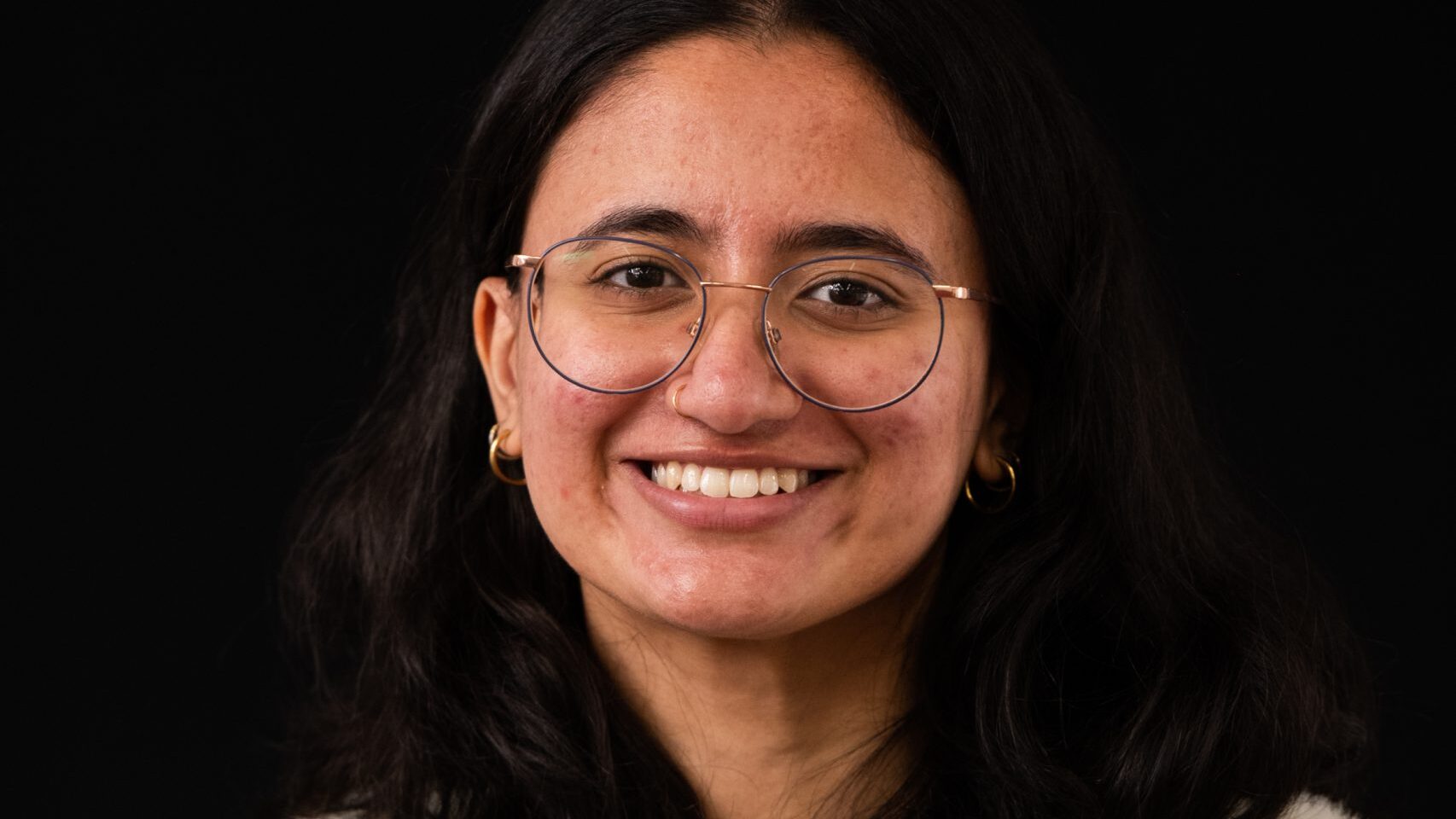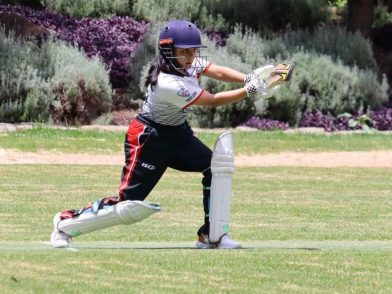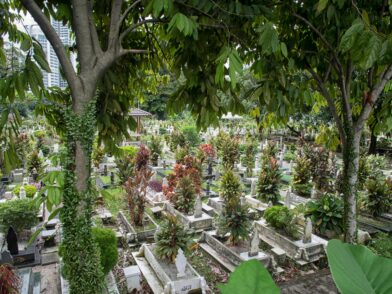“Areh all of this is not real.”
“What do you mean it’s not real? She literally ended up in ED because of it. Depression isn’t a joke.”
“Well, it’s a gora problem. It’s what happens when you have everything and don’t fight for anything.”
“She’s Muslim!”
“Was she praying?”
I thought after hearing all of that and much more from my community, I’d get the message: good Hyderabadi Muslims don’t do mental health labels. So, what was I doing at Dr Wu’s office on that sweltering spring afternoon in 2021? Dr Wu’s office was inside a shopping complex that held a Subway, a kebab shop and Woolworths. Behind her, on the white walls was a black and white diagram of the heart. Directly under was the basin and adjoined benchtop that held the familiar sight of sanitising wipes, pink anti-bacterial soap and latex gloves the colour of spoiled milk.
“You fit the criteria for BPD – you have at least five of the nine symptoms. Sheena and I have been seeing you for three years now and your struggles with emotional regulation, maintaining relationships, self-harm, suicide, and abandonment all point to borderline personality disorder.”
Dr Wu paused to see if I had any questions, because she understood that unlike Hollywood’s depiction of mental health diagnoses, life didn’t magically become easier, and it certainly didn’t mean that people accepted your diagnosis.
With each passing explanation of what it meant to have BPD, where I could find good resources and support, my leg bounced in rhythm with the soft ticking of the wall clock. Sweat pooled under my armpits and the fabric of my t-shirt clung to my back. BPD was a label.
Borderline wasn’t hard to understand and its symptoms of impulsivity, impaired social relationships, emotional volatility paired with creativity and empathy described me holistically. But by the time I left Dr Wu’s office, the sweat and fidgeting were accompanied by trembling. All I could hear were the sneering remarks I had heard growing up – depression is laziness; anxiety is an excuse; self-harm is manipulation; suicide is for the kaffirs.
All I could hear were the sneering remarks I had heard growing up – depression is laziness; anxiety is an excuse; self-harm is manipulation; suicide is for the kaffirs.
My consumption of information on BPD has been vast, and I have had to be careful in what I chose to read or watch. There currently aren’t any statistics on people of colour that live with borderline personality disorder. Research about helping people with BPD and wider education lacks an intersectional lens of culture and religion. A big part of the reason why the Hyderabadi Muslim community struggles with accepting mental health as a valid health concern is due to its cultural stigmas and religious misconceptions it has deemed to be irrefutable. Misconceptions such as a low level of religiosity being the cause of mental health issues, an individual’s apparent insincerity as a Muslim being a result of their mental health and the overall insistence that any mental health diagnosis is purely a phenomenon of Western society are incredibly toxic to the overall health of any community, yet these attitudes and the fears of ostracisation that are attached to them overpower any sense of humanity and closeness that the Hyderabadi Muslim community claims to foster. We’re not the only community who struggles with this.
Stories of culturally diverse families and parents walking out of examination rooms when hearing the term ‘autism’, ‘borderline personality disorder’, ‘depression’ ‘OCD’ are rampant in our communities. Researching culturally appropriate ways to educate culturally and racially marginalised communities must be a key focus of mental health scholarship and government funding.
I remember a white colleague talking about the relief that came with her diagnosis of depression. She flicked her blonde-hair and wetted her pale lashes. A mental health diagnosis was her moment of metamorphosis — whatever that meant.
“But what about your aunties, cousins, parents, siblings?”
“What about them?”
“How’d they take it?”
She laughed in response to my question and unlocked her phone to show me a photo of four adults with toothy smiles. Her diagnosis was rewarded with hugs and smiles. She took off on a solo trip to the UK to really ‘accept herself’.
It wasn’t like that for me. I got terse nods, clenched fists, side eyes with grinding molars and lots of silence. Not to mention the blank stares and sighs so deep it felt like my family reached back five generations to gather the disappointment of every aunt, uncle, grandfather and grandmother in our lineage. Then a mass exodus from my room, down the creaking wooden stairs to the beige sofas in the living room. From above, I heard my family’s conclusion: “If she wants to believe she’s sick, that’s all she’ll ever be.”
The privilege of self and communal acceptance is nuanced. Being part of a community that fears labels (other than the simple “good” and “bad”) is daunting. Aunties truly believed their advice of “keep it to yourself” and “if you pray tahajjud it’ll go away.” I’ve still not been able to reconcile how anywhere between 520,000 to 1.3 million Australians are meant to pray borderline away.
Aunties truly believed their advice of “keep it to yourself” and “if you pray tahajjud it’ll go away.” I’ve still not been able to reconcile how anywhere between 520,000 to 1.3 million Australians are meant to pray borderline away.
Nothing prepared me for witnessing a sensationalised court trial between Hollywood elites, Johnny Depp and Amber Heard. The trial happened a few months after receiving my diagnosis. A psychologist, Dr Curry, who spent all of 12 hours with Amber Heard, promptly diagnosed her with BPD. Now, sometimes mental health diagnoses can be straightforward and the purpose of me writing this is not to undeniably challenge Heard’s BPD diagnosis. Yet, personal experience and engagement with the BPD community has taught me two things: 1) to receive a diagnosis for borderline personality disorder, the benchmark is to present five out of nine symptoms for at least a year and 2) grand, stereotypical statements about who and what people with BPD are lack much needed nuance.
Heard was publicly described as someone who teetered between the blurred edge of “princess and victim” because of her BPD. Although I’m not the greatest fan of the way Heard was portrayed for the duration of this trial, I can concede that mental health is not all edgy quotes, black hearts inked on forearms and listening to Evanescence croon about death through speakers. Being emotionally volatile is something I currently struggle with and while there is no shame in it, describing the volatility of BPD as ‘princess’ vs ‘victim’ belittles the very reality of experiencing highs and lows across a spectrum of feelings and often in extreme emotional forms.
Then came Dr Curry’s generalisation that people living with BPD were typically “assaultive as partners. They’ll make threats using the legal system, threaten to file for a restraining order, claim abuse”. Her words made me feel as if I was munching down on an unsuspecting cardamom when my mouth was full of biryani.
Her words made me feel as if I was munching down on an unsuspecting cardamom when my mouth was full of biryani.
From a cultural perspective, which is something white Hollywood elites never have to think about, this elicits hushed conversations that break something vastly more important than an endless bank account – the spirit. Every few hours, I feel as if Aunties are whispering right in my ear. Who will marry her now? Why is your daughter so open about it? Isn’t she the same as that Umber Heard?
Three years on from my diagnosis, my journey with the label of BPD is one that I now compare to the application process and eventual fading of henna. In the lead up, my medical team ummed and ahhed at different designs. One was interconnected. One was swirlier and set in childhood. One was rigid in lines and independent. My first few weeks of wearing the label of BPD, the stain gradually got darker. It smelt of freshly ground eucalyptus and lemon — constantly stinging my nose. By the time the stain showed signs of cracking and new skin was beginning to regenerate, Depp vs Heard had become an international sensation.
I only began to appreciate the faded pattern of my BPD label when my partner took an active interest in researching and learning about BPD. We scheduled in an evening each week where we’d learn about how BPD not only impacted all areas of my life, but also how it provided me with life skills to be empathetic, insanely creative, an expert at organisation and a sense of justice that is rooted in the black and white thinking unique to people diagnosed with ASD and BPD. The unconditional support and love shown to me by my partner was the reason I resumed therapy and continue learning ways to master emotional regulation. These moments of coming together and learning over the past two years are the snippets of reason and hope that keep me tethered during episodes of rage, shame and fear. Growing up my partner was exposed to similar beliefs about mental health diagnoses. But his journey in understanding mental health and chronic illness, unlearning stigmas ingrained into his conscience while navigating how to respectfully engage with a loved one’s mental health diagnosis has been monumental in cementing that communal support is imperative for healthy living.
If this story has raised any concerns, support is available. Contact Lifeline at 13 11 14 or reach out to Transcultural Mental Health on (02) 9912 3851.
Explore other topics —






